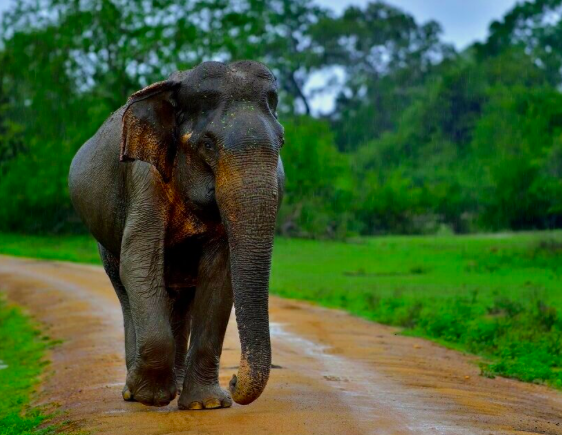Electrified fences pose risk to Sri Lanka's elephants
It is one of the countries with the highest number of elephant deaths in the world: the subspecies inhabiting the island numbers less than 7,000. One of the main causes is habitat reduction, compounded by farmers' illegal electrified nets that in 2023 alone killed 50 elephants. Now the power company has begun to sue those who divert the voltage into these barriers.
Colombo (AsiaNews) - Although elephants are one of the main attractions in the tourism sector in Sri Lanka, bringing a notable flow of foreigners to rural areas, the inhabitants of the agricultural districts consider these endangered creatures a "dangerous nuisance ”.
In 2023, 449 elephants were illegally killed. It was the worst year ever. According to senior officials of the Ceylon Electricity Board (CEB), the country's main electricity company, 50 wild elephants have been electrocuted in these high voltage "traps" in the last year.
This could happen because there are more and more illegal connections to the Ceb lines of fences that "protect" agricultural land. Several elephants have also fallen victim to the so-called “jaw bomb,” an explosive device hidden in food bait that explodes when chewed.
Electrical engineer Kasun Tennakoon explained to AsiaNews that "the electricity supplied to homes cannot be used for other purposes. Improper use in fences is not compliant with regulations, as well as being extremely dangerous, as it can cause damage to anyone who accidentally trespasses inside.
The use of high voltage without safety measures is a criminal offense as it can kill not only elephants but also humans. This is why the CEB has started to file police complaints against the farmers involved in this type of killing of elephants."
The International Union for Conservation of Nature has classified the Asian elephant (Elephas Maximus) as a species at risk of extinction. The Sri Lankan subspecies is one of only three still living in the world, the second largest after the African elephant. Government statistics reveal that the current population numbers around 7,000.
However, environmentalists are of the opinion that the real figure is much lower, due to the loss of animal habitat. Nishantha Samarasinghe, an environmental lawyer, is also convinced of this: “One problem is the lack of staff in the Department of Wildlife Conservation which only has a sixth of the workforce it should have.
It is necessary to understand that the extinction of our elephants is a probability as the authorities have failed to address the factors behind the issue. In particular the process by which land is allocated for development projects, including agriculture that literally devour elephant habitat. Currently, what until recently were transit and feeding areas for these creatures are villages, cultivated fields, airports and cricket stadiums."
12/02/2016 15:14
11/08/2017 20:05







.png)










